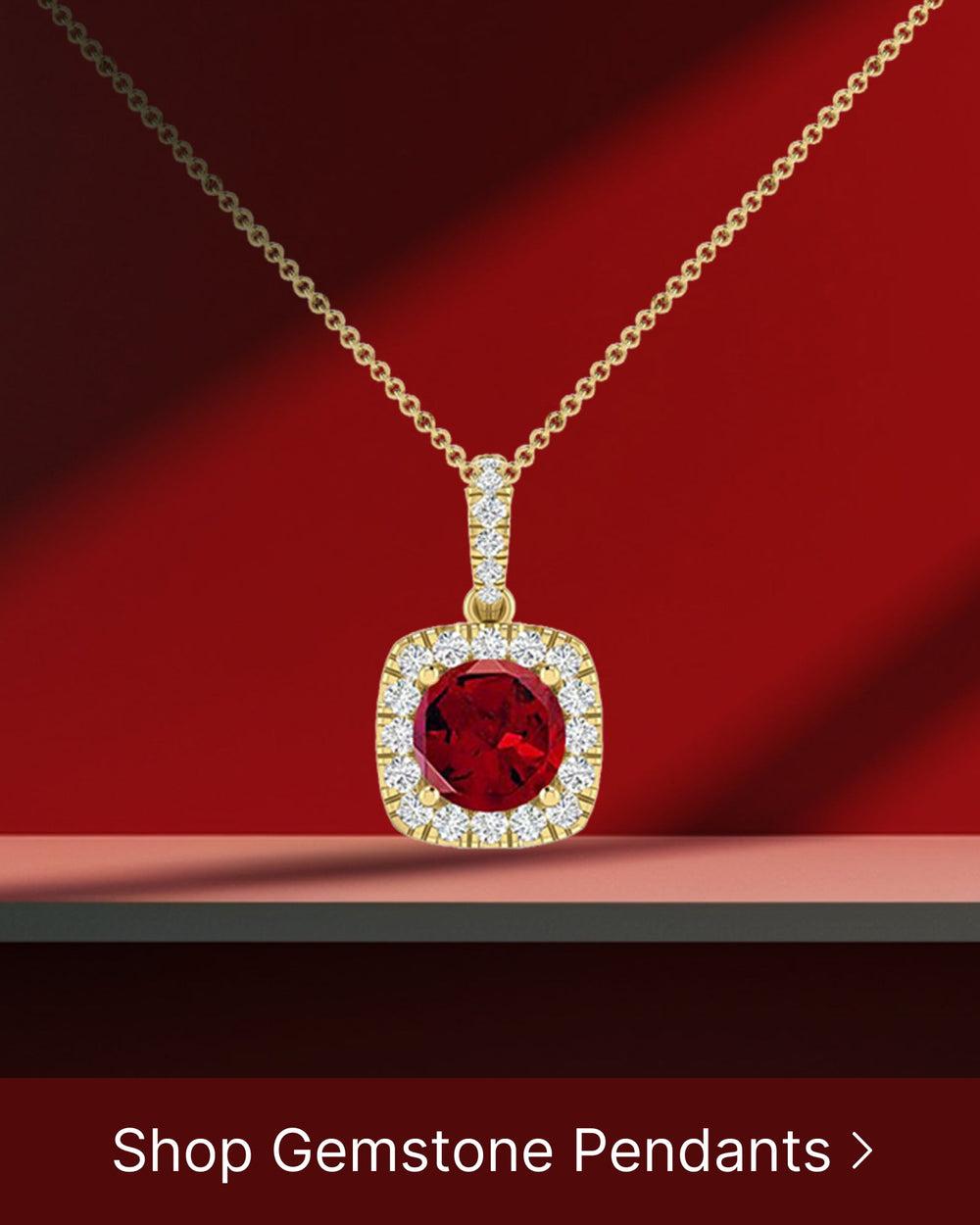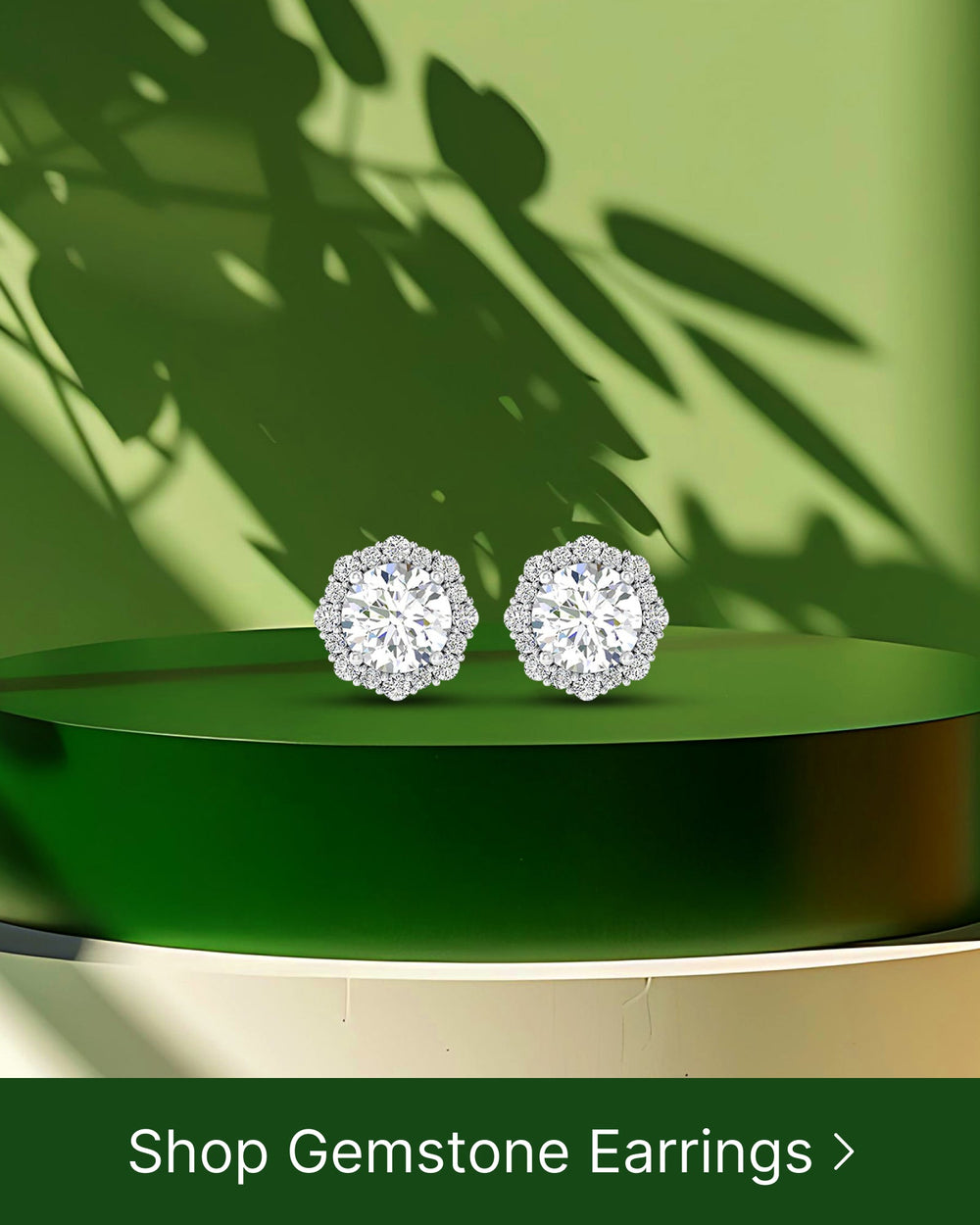Diamond engagement rings have long been the traditional choice for couples embarking on the journey of marriage. However, in recent years, there has been a growing interest in exploring alternative options to diamonds. This shift is driven by various factors, including ethical concerns, cost considerations, and a desire for uniqueness.
Understanding the Appeal of Diamond Engagement Rings
Before delving into the world of diamond alternatives, it is important to understand why diamond engagement rings have captivated couples for centuries. Diamonds have symbolized love, commitment, and eternal devotion, making them the ultimate choice for expressing one's feelings. The sparkle and brilliance of diamonds have an undeniable allure that exudes luxury and elegance.
The Tradition of Diamond Rings
For many years, diamond rings have been synonymous with engagement and marriage. Their association with everlasting love dates back to the Ancient Egyptians, who believed that the circle shape of the ring represents eternity. This tradition continued through the centuries, culminating in the iconic phrase, "A diamond is forever," coined by De Beers in the mid-20th century.
Throughout history, diamond engagement rings have played a significant role in various cultures and societies. In ancient Rome, for example, the groom would present his bride-to-be with a simple iron ring to signify his ownership over her. However, as time went on, the tradition evolved, and the iron ring was replaced with a gold one, symbolizing love and fidelity.
During the Renaissance period, diamond engagement rings became more popular among the nobility and aristocracy. These rings were often adorned with intricate designs and featured larger, more prominent diamonds. The wealthy would spare no expense in showcasing their love and social status through these extravagant pieces of jewelry.
As the diamond trade expanded in the 19th century, engagement rings became more accessible to the middle class. The discovery of diamond mines in South Africa led to an increase in the supply of diamonds, making them more affordable for a wider range of people. This accessibility further solidified the diamond's status as the ultimate symbol of love and commitment.
Why Some Couples are Looking for Alternatives
Despite the enduring popularity of diamond rings, a growing number of couples are choosing to explore alternatives. One reason is the concern surrounding the ethical issues associated with the diamond industry, such as conflict diamonds or "blood diamonds." The exploitation of workers and environmental damage caused by diamond mining has raised ethical concerns among consumers, leading them to seek alternative options that align with their values.
Furthermore, the high demand and limited supply of diamonds contribute to their inflated prices. The diamond market is controlled by a few major companies, which can manipulate the supply to maintain high prices. This exclusivity has led some couples to question the value and authenticity of diamonds, prompting them to consider other gemstones or materials for their engagement rings.
Many couples are also seeking unique and personalized options that better reflect their individual style and values. They want their engagement rings to be a true representation of their love story and personal journey. This desire for individuality has led to a rise in popularity for alternative gemstones, such as sapphires, emeralds, and even unconventional choices like pearls or opals.
Additionally, some couples are drawn to the idea of vintage or antique engagement rings. These rings have a unique charm and history that cannot be replicated. They often carry sentimental value and can be passed down through generations, creating a sense of connection to the past.
Ultimately, the decision to opt for a diamond or explore alternatives is a personal one. Each couple has their own preferences, values, and budget considerations. Whether it's the timeless beauty of a diamond or the allure of a unique alternative, what matters most is finding a ring that symbolizes the love and commitment shared between two individuals.
The Rise of Gemstone Engagement Rings
Gemstone engagement rings have emerged as a popular alternative to traditional diamond rings. These vibrant and colorful gemstones offer a wide array of options for couples looking to depart from the norm.
With a rich history dating back centuries, gemstones have always held a special allure. From the ancient Egyptians who believed gemstones possessed mystical powers to the Renaissance period where gemstones were seen as a symbol of wealth and status, these precious stones have always captivated the human imagination.
Today, gemstone engagement rings have become a symbol of individuality and personal style. They offer a unique way for couples to express their love and commitment, while also making a bold fashion statement.
Popular Gemstones for Engagement Rings
From dazzling sapphires to exquisite emeralds, gemstones present a range of captivating choices for engagement rings. Sapphires, often associated with royalty, possess a deep blue hue that symbolizes loyalty and wisdom. Their timeless beauty has made them a popular choice among couples who want to add a touch of elegance to their ring.
Emeralds, known for their rich green color, are believed to represent fertility and new beginnings. Their vibrant hue is a perfect representation of the love and growth that a couple embarks upon as they start their journey together.
Other popular gemstones include rubies, amethysts, and aquamarines, each with its unique symbolism and beauty. Rubies, with their fiery red color, are often associated with passion and love. Amethysts, with their regal purple hue, are believed to bring clarity and peace to a relationship. Aquamarines, with their serene blue color, are said to promote harmony and trust.
With such a diverse range of gemstones to choose from, couples can find the perfect gemstone that resonates with their personal values and aspirations.
Pros and Cons of Gemstone Rings
While gemstone rings offer an exciting alternative, it is essential to weigh their pros and cons. One significant advantage is the ability to choose a gemstone that holds personal meaning for the couple. Whether it's a birthstone or a gemstone that represents a special memory, the options are endless.
Additionally, gemstone rings often come at a more affordable price point compared to diamonds. This allows couples to invest in a stunning piece of jewelry without breaking the bank. The affordability factor also opens up possibilities for couples to explore different gemstone combinations, creating unique and personalized designs.
However, it is important to note that some gemstones may be less durable than diamonds, and their vibrant colors may fade over time. This means that regular maintenance and care are necessary to ensure the longevity and beauty of the gemstone ring.
Despite these considerations, the allure of gemstone engagement rings continues to grow. Their versatility, symbolism, and unique beauty make them an appealing choice for couples who want to make a statement and stand out from the crowd.
So, whether it's a stunning sapphire, an enchanting emerald, or any other gemstone that captures your heart, the rise of gemstone engagement rings offers couples a world of possibilities to express their love and commitment in a truly extraordinary way.
Moissanite: A Brilliant Diamond Substitute
Among the various diamond alternatives, moissanite has gained significant popularity due to its remarkable similarity to diamonds. This lab-created gemstone offers a brilliant sparkle that can easily be mistaken for a diamond.
What is Moissanite?
Moissanite is a lab-grown gemstone that was first discovered in a meteor crater. This gemstone possesses several qualities that make it an excellent diamond substitute, including its high hardness and exceptional brilliance. Moissanite's optical properties allow it to reflect light with incredible intensity, making it a visually stunning choice for engagement rings.
Comparing Moissanite and Diamonds
When comparing moissanite to diamonds, there are several distinctions to consider. Moissanite has a higher refractive index, giving it a greater fire or iridescence compared to diamonds. Diamonds, on the other hand, have a slightly higher hardness, making them more resistant to scratches. Additionally, moissanite offers a more affordable price point, allowing couples to achieve the look of a diamond without breaking the bank.
Cubic Zirconia: Affordable and Sparkling
For those seeking an affordable yet dazzling alternative to diamonds, cubic zirconia presents an attractive option. This synthetic gemstone closely resembles a diamond, adding a touch of sparkle to any engagement ring.
The Features of Cubic Zirconia
Cubic zirconia is a lab-created gemstone that mimics the appearance of diamonds. It is hard and durable, offering a long-lasting and affordable alternative to genuine diamonds. Cubic zirconia's superior brilliance makes it an eye-catching choice.
How Cubic Zirconia Stacks Up Against Diamonds
While cubic zirconia may not possess the same prestige as diamonds, it does have its advantages. The most notable benefit is its affordability, allowing couples with budget constraints to still have a stunning engagement ring. However, it is important to note that cubic zirconia is more prone to scratching and its brilliance may diminish over time.
Lab-Grown Diamonds: Ethical and Economical
For those who desire a diamond, but with ethical and cost considerations in mind, lab-grown diamonds offer a compelling solution. These diamonds are created in a controlled laboratory environment, replicating the natural process of diamond formation.
The Process of Creating Lab-Grown Diamonds
Lab-grown diamonds are produced through high-pressure, high-temperature (HPHT) or chemical vapor deposition (CVD) methods. Both methods simulate the conditions found deep within the Earth's mantle, allowing carbon atoms to crystallize and form diamonds over time. The result is a chemically and physically identical diamond to those found in nature.
Benefits of Choosing Lab-Grown Diamonds
Opting for lab-grown diamonds not only addresses ethical concerns by avoiding the issues associated with mining, but it also offers a more affordable price point. Lab-grown diamonds typically cost less than their naturally mined counterparts while providing the same exceptional beauty and quality. Furthermore, lab-grown diamonds are environmentally friendly since they do not require large-scale mining operations.
In conclusion, exploring diamond alternatives for engagement rings opens up a world of possibilities. Whether it's opting for the timeless elegance of gemstones, the remarkable sparkle of moissanite, the affordability of cubic zirconia, or the ethical and economical choice of lab-grown diamonds, couples now have more options than ever to find an engagement ring that perfectly reflects their style, values, and budget.





